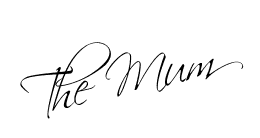Type 1 Diabetes is a serious problem within the Australian Indigenous community.
A 2008 report to the Australian Bureau of Statistics about Diabetes in Australia states that:
"Diabetes and high blood sugar combined was 3.4 times as prevalent among Aboriginal and Torres Strait Islander peoples than among non-Indigenous people. Indigenous people living in remote areas of Australia had a rate of these conditions combined about twice that of Indigenous people living in non-remote areas. Diabetes is often referred to colloquially as blood sugar in remote Indigenous communities, and a combined type 1 and type 2 rate is used to compare the Indigenous and non-Indigenous populations"
According to the "Clinical management of Aboriginal people with co-existing diabetes and alcohol related health problems – A review" the Australian Aboriginal community has the 4th highest rate of Type 1 Diabetes in the world.
The following paragraph is a quote from page 1 of this Review:
"The health status of Aboriginal Australians continues to be poor with life expectancy at birth of Indigenous Australians estimated to be around 20–25 years lower than the total population2. Premature death and high morbidity significantly impact on communities, where individuals and families experience continual loss. Endocrine disorders have the highest overall standard of mortality ratio among Aboriginal people who are dying at three times the rate of the rest of the population3. There is a 10 to 30 per cent higher incidence of diabetes among Aboriginal people than is found in all other Australian sub populations4, 5. As one participant in our study noted ‘Some Aboriginal people have been sick for so much of their lives they accept feeling bad as normal, so they don’t even discuss their diseases because they accept them as a fact of life’."
In addition - this report goes on to state, "Mortality in Australians with diabetes is
approximately twice that of Australians that do not have diabetes and this is higher
among Aboriginal Australians."
Management of Diabetes in Indigenous Communities is a real concern, as stated in the following passage on page 23 of this Report, "The suboptimal management of diabetes in Australia in the context of poor Indigenous health and this population’s concomitant comorbidity health needs, is a cause for concern and requires ongoing education and support."
This Report goes on to investigate the need for Cultural Understanding when dealing with medical issues in the Indigenous Community:
"There is a tendency to assume all Aboriginal health workers are homogenous, offering them a ‘one size fits all’ curriculum. There is also an assumption amongst many non Aboriginal education providers that all AHWs hold the same cultural beliefs, and this is not necessarily so. Diversity exists between Aboriginal groups from urban and rural and remote areas as it does in all Australian society. Consequently AHWs need to develop their own cultural understandings via a ‘look, listen, learn’ model." (pp. 41).
and,
"While from diverse communities Aboriginal people do not generally conceptualise health as a uni-dimensional aspect of life. Health means life. For them health involves the whole-of-life and inter-relationships and inter- dependence between people, and between people and their land are as essential to their health as the management of disease59. Therefore it is important to take a broad perspective that includes control of the physical environment, without compromising community dignity, self-esteem, culture, spirituality, family and social justice." (pp. 41).
To find out more about ways that YOU can help Indigenous communities in Australia visit:
or





No comments:
Post a Comment